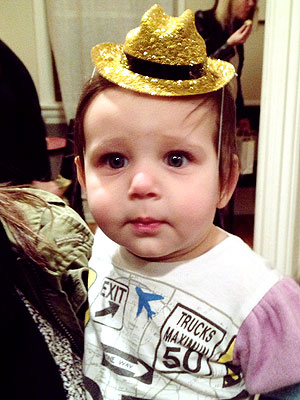BEIRUT (AP) — A new video game based on Syria‘s civil war challenges players to make the hard choices facing the country’s rebels. Is it better to negotiate peace with the regime of President Bashar Assad, for example, or dispatch jihadist fighters to kill pro-government thugs?
The British designer of “Endgame: Syria” says he hopes the game will inform people who might otherwise remain ignorant about the conflict.
Views differ, however, on the appropriateness of using a video game to discuss a complex crisis that has killed more than 60,000 people since March 2011. Computer giant Apple has refused to distribute the game and some consider the mere idea insulting. Others love it, and one fan from inside Syria has suggested changes to make the game better mirror the actual war.
The dispute comes amid wider arguments about violent video games since last month’s shooting in Newtown, Connecticut, that left 20 children and six adults dead. This week, the National Rifle Association revised the recommended age for a new shooting game after criticisms by liberal groups.
Tomas Rawlings, who designed the Syria game, said he got the idea while watching TV pundits debate the possible consequences of directly arming Syria’s rebels, which Western nations have declined to do. He said he thought a game could explore such questions by allowing players to make choices and see their consequences.
“For those who don’t want to read a newspaper but still care about the world, this is a way for them to find out about things,” said Rawlings, the design and production director of U.K.-based Auroch Digital.
In the simple game, which took about two weeks to build, the player assumes the role of the rebels seeking to topple Assad’s regime. The play alternates between political and military stages. In each stage, the player sees cards representing regime actions and must choose the rebel response.
The choices seek to mirror the real conflict. The regime may get declarations of support from Russia, China or Iran to boost its popularity while the rebels receive support from the United States, Turkey or Saudi Arabia – reflecting the foreign powers backing the two sides.
In battle, the regime may deploy conventional military forces like infantry, tanks and artillery as well as pro-government thugs known as shabiha. The rebels’ choices include sympathetic Palestinian or Kurdish militias, assassins or jihadist fighters known as muhajideen.
Some of the rebels’ strongest attacks also kill civilians, reducing rebel popularity and seeking to reflect the war’s complexity.
All along, the player is given basic information about the conflict, learning that Islamists once persecuted by the regime now consider the fight a holy war and that the shabiha are accused of massacring civilians.
The game ends when one side loses its support or the sides agree to a peace deal. The player is then told what follows. The longer the fighting lasts, the worse the aftermath, as chaos, sectarian conflict and Islamic militancy spread.
The lasting impression is that no matter which side wins, Syria loses.
Rawlings said that’s the game’s point.
“You can win the battle militarily but still lose the peace because the cost of winning militarily has fractured the country so much that the war keeps going,” he said. “You can also end the war so that there is less of that.”
The game was released on the company’s website and as a free download from Google for Android devices on December 12. Rawlings submitted the game to Apple to distribute via its App Store but the company rejected it.
Apple declined to comment, but Rawlings’s rejection referred to a company guideline for mobile apps: ” ‘Enemies’ within the context of a game cannot solely target a specific race, culture, a real government or corporation, or any other real entity.”
Rawlings is modifying the game, though he worries it will weaken it.
“It will still be the same overall experience, but it will reduce the value of the game to inform people,” he said.
News of the game was greeted with a mix of interest and outrage online. Some complained that players can’t take the regime side, while others found it wrong to make a game about a brutal war.
“Rawlings has mistakenly understood the Syrian war as a nonchalant ‘experience’ that people can play while waiting for the train to work,” said Samar Aburahma, a university student of Palestinian descent in San Francisco who refused to try the game. “It is beyond insulting to Syrians, especially given the fact that war is ongoing.”
Others find it a valuable, if limited, approach to the conflict.
Andrea Stanton, a religious studies professor at the University of Denver who studies Syria, said she responded emotionally to the game.
“It isn’t really a fun game to play,” she said, noting that she was angry when she lost and felt dread when the frequency of deadly regime airstrikes went up as the game progressed – as it has in the real conflict.
“This a very sobering game in that you sense how quickly the military stakes escalate and how little the political phase has to do with actual Syrians,” she said.
She is organizing a campus activity for students to play and discuss the game.
“I think it is very valuable for teaching and getting people to experience a sense of the limited options the rebels face,” she said.
It is unclear how many people have played the game. Google says it has been downloaded as many as 5,000 times from its site, and Rawlings says more have played online. He guesses more than 10,000 people have tried it.
Few in Syria are likely to have played it, since fighting has made the Internet and even electricity rare in some parts of the country.
One 18-year-old Syrian gamer liked the game so much, however, that he sent Rawlings a list of suggestions for improvement.
Reached via Skype, he said the jihadist fighters should be called Jabhat al-Nusra, after an extremist rebel group that the U.S. has designated as a terrorist organization.
He also pointed out that few rebel groups have tanks, as they do in the game, and suggested new rebel tactics.
“Car bombs are used lots in Syria, so that would make the game more realistic,” he said.
He said he hoped the game would help people understand the situation.
“I wish there were a 3D strategy game about Syria so you could feel the destruction on the ground,” he said.
The player, who spoke on condition of anonymity for fear of reprisals, said his feelings playing the game often mirror his feelings about the war. He wants peace but can’t imagine the rebels accepting a negotiated solution given how many people have died.
“Right this second, I want the war in Syria to stop, but when you see what is happening on the ground there is no way to make peace,” he said. “When I play the game like a rebel, I have to reject the peace.”
___
Associated Press writer Michael Liedtke contributed reporting.
Online: http://gamethenews.net/index.php/endgame-syria/
Gaming News Headlines – Yahoo! News
Title Post: Video game puts players in shoes of Syrian rebels
Url Post: http://www.news.fluser.com/video-game-puts-players-in-shoes-of-syrian-rebels/
Link To Post : Video game puts players in shoes of Syrian rebels
Rating:
100%
based on 99998 ratings.
5 user reviews.
Author: Fluser SeoLink
Thanks for visiting the blog, If any criticism and suggestions please leave a comment














